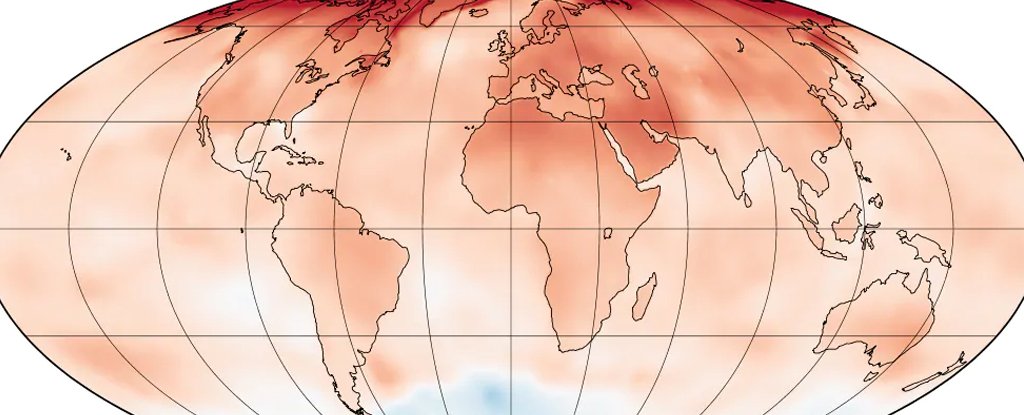It’s a common refrain from those who question the findings of climate science: the computer models scientists use to project future global warming are inaccurate and shouldn’t be trusted to help policymakers decide whether to they must take potentially costly measures to limit greenhouse gas emissions.
A new study effectively quells this argument by examining how climate models published between 1970 – before these models were the supercomputer-dependent juggernauts of physical equations spanning glaciers, ocean pH and vegetation, as they are today. today – and 2007.
The study, published Wednesday in Geophysical Research Letters, finds that most of the models examined were incredibly accurate in projecting global warming in response to increasing amounts of planet-warming greenhouse gases. These gases, primarily the main long-lived greenhouse gas pollutant, carbon dioxide, have reached record highs this year, according to new UN report out on Tuesday.
They are now higher than at any other time in human history.
The study blames some of the models, including one of former NASA researcher James Hansen’s most famous calculations, for overestimating warming because they assumed there would be even more gas at greenhouse effect in the atmosphere than what actually happened. These assumptions mainly concerned greenhouse gases other than CO2, such as methane.
Hansen’s projection, according to the study’s lead author Zeke Hausfather, a researcher at the University of California, Berkeley, was off by about 50% because it did not project a significant drop in emissions of substances that deplete the stratospheric ozone layer.
Many of these gases are also potent global warming agents. Nor did Hansen predict a temporary stabilization of methane emissions during the 2000s, Hausfather says.
However, his model, like many others examined in the new study, got the fundamental relationship between greenhouse gas emissions and the amount of warming they would cause right. The errors came from mispredicting larger wildcards: how societal factors would govern future emissions through economic growth, emissions reduction agreements and other factors.
“The big takeaway is that climate models have been around for a long time, and in terms of getting the Earth’s core temperature right, they’ve been doing it for a long time,” Hausfather said in an interview.
By looking at the performance of past models, Hausfather says researchers can get a better idea of the pros and cons of past model generations. This is crucial as scientists are rolling out the next set of models to inform the upcoming 6th Assessment Report of the United Nations Intergovernmental Panel on Climate Change, due out in 2022.
“Today’s climate models are not perfect, they are still being improved,” he says.
(Hausfather et al. 2019/Zeke Hausfather)
Image: Comparison of trends in temperature versus time (top) and the implied transient climate response, or the amount of temperature increase that could occur as carbon dioxide doubles (bottom) between observations and models over the periods displayed.
While a figure (above) and calculations included in the study seem to show that many models had a slight warm bias over time, Hausfather says the study found “no overestimating or underestimating”. detectable consistent estimate of future warming” in the models that have been examined. .
When it comes to temperature, there is considerable confidence that current models are accurately capturing the planet’s response to record amounts of greenhouse gases in the air.
However, many other aspects of climate change contain greater uncertainties, such as cloud formation and how small atmospheric particles called aerosols might alter the types of clouds that form.
This could either increase or decrease warming.
Additionally, precipitation changes, especially at the regional level, are still extremely difficult for modelers to capture, Hausfather says.
“Temperature is easy, other climate variables like rainfall are much more difficult.”
For the study, the researchers evaluated the climate models on their performance in terms of how much projected global average temperature change compared to what actually happened over time.
On that count, 10 of the 17 patterns examined were virtually indistinguishable from sightings, according to the study — in other words, a near-perfect match.
They also looked at the relationship between a model’s temperature projection and the amount of greenhouse gases in the atmosphere, also known as external forcing. On that comparison, 14 of the 17 models “were indistinguishable from observations,” and two of the 14 showed more warming than actually happened, with one showing less warming, Hausfather says.
“We argue that the second test is more accurate,” says Hausfather, because it allows scientists to control for the fact that models might be wrong about the amount of external forcing, but that the relationship between greenhouse gases and the temperature change is correct.
“By looking at this relationship between temperature and forcing, we can assess the performance of the model on its physics and not on its crystal ball of future emissions,” Hausfather said.
Researchers who were not involved with the new study said it used relatively simple statistical analyzes that may miss some key influences on global surface temperatures over time.
For example, Kevin Trenberth, a senior scientist at the National Center for Atmospheric Research, said he had doubts about the study’s key conclusion that “climate models effectively capture the processes” that determine mean surface temperature. worldwide over several decades.
He says the reality is more complex than the study shows, because some of the most uncertain factors about climate change, such as how the water cycle responds as the world warms, could influence global temperatures, as are hurricanes and aerosols, which are either not included in climate models or, in the case of aerosols, a big question mark because they can influence cloud formation which in turn can change temperatures.
According to Trenberth, the simple fact that the models were generally on target does not prove that they obtain such complex processes, and further research is needed for this.
2019 © The Washington Post
This article was originally published by The Washington Post.



